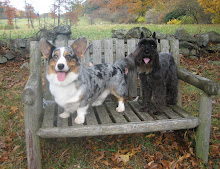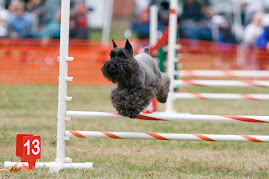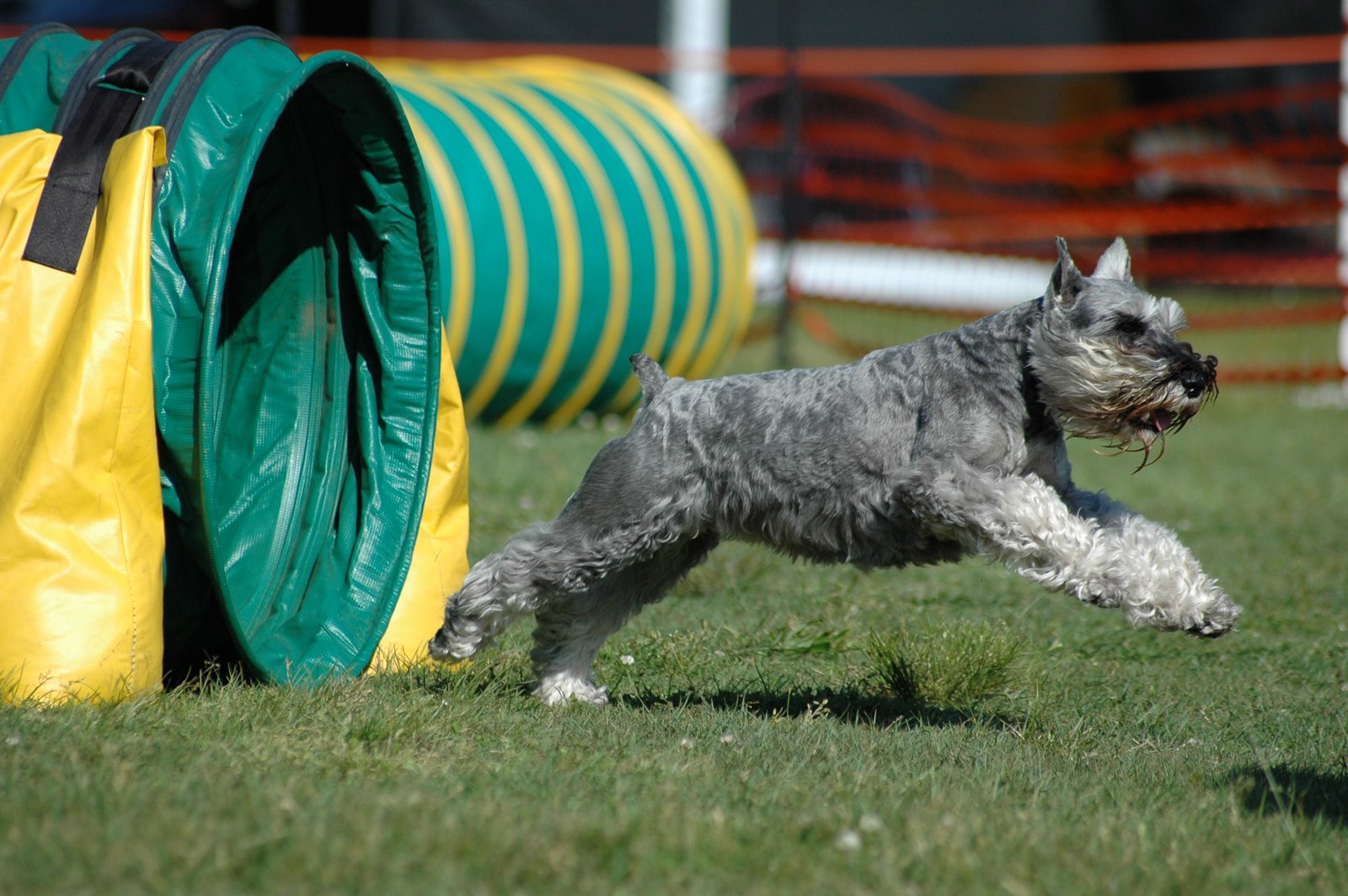Yesterday Bug and I travelled to Oxford, CT to attend a clinic on “Teeter Troubleshooting” taught by
Bobbie Bhambree of Divine K-9. Bobbie ran a Staffie, currently runs a Kelpie, and has a Chihuahua-Terrier mix in training. She trains with Susan Garrett and Tracy Sklenar and follows the “Say Yes!” program.
We started by going around the room, introducing ourselves, our dogs, and describing their teeter issue, or if there is no issue, why we were there. Bug had a fly-off about a year ago and since then he has been really creepy on the teeter and would prefer to avoid it. Our fly-off occurred during a private lesson.
Bobbie talked about typical teeter issues – almost all of which were mentioned by attendees: slow performance, worried dog, avoidance, fly-offs to name a few.
She said “at the end of the day it is all comes down to value and understanding.” The issues above occur because of the lack of understanding and lack of value.
The four aspects of the teeter that you should train are:
1. End behavior;
2. Movement;
3. Height;
4. Sound.
One of the biggest mistakes people make is to not focus on each individual aspect and to lump them all together.
In Bobbie’s opinion the following foundation behaviors will help you have a super teeter and succeed in agility in general: rear-end awareness, fast recalls, impulse control, focus forward (not staring at the momma), stay, food drive, and tug drive.
She stressed how important it is to take breaks and PLAY to get your dog’s adrenaline going.
For yesterday’s clinic Bobbie had set up 5 stations that we would rotate through with a partner.
#1 Rear-End Awareness
Shape your dog to walk backwards. Bobbie said many people teach a dog to walk backwards by walking into them and this results in the dog working off its front. If you shape a dog to walk backwards they use their rear more – like rear-wheel drive.
The way Bobbie teaches this is to sit on the floor with her legs in a “V.” One of the reasons she sits in this position is because it is different – you aren’t usually training your dog in this position and you might not be offered the usual variety of tricks.
Initially any foot movement is to be rewarded as long as the dog is not sitting or downing. Bowl the reward through the front feet if possible.
Break it up with frequent bouts of play so as not to induce “cookie coma.” As the dog offers more movement you can become more selective about what you will reinforce.
#2 Wobble Board + Tippy Board
Both items are a great way to get a dog excited about sound + motion and build value for them.
Once your dog is comfortable on the board, start playing tug with them while they are on the board. If you can pull your dog off the board – tug stops. Your dog learns they must hold their ground and stay on the board to play.
To play the game with food your dog gets food for causing movement. No movement = no food.
#3 Elevator Game
After playing with your dog to get him amped up, position your dog between you and the teeter near the end of the down contact, initially have the board on a perch, and have them hop up. Immediately feed your dog with your hand from under the board so you are feeding between his front feet. Then say Ready (or whatever phrase gets your pup excited) and ask your dog to target – if you use a target. Once they have mastered this with the perch you will hold the board up with your arm, knee, or a partner depending on the size of the dog. You’ll say something like, “Ready, 1, 2, 3 – target” and drop the board. As your dog gains confidence you can increase the height.
#4 Bang Game
This game is designed to work on your end behavior and desensitize your dog to the bang. You place a jump stanchion under the "down" side of the teeter so that the up side is suspended by a few inches. After playing with your dog to get him amped up, position your dog between you and the teeter near the end of the contact, have him hop on and bang the teeter. Once your dog is already over the noise/movement you can teach them that you expect them to give you their end behavior. You can also change the height by using a chair instead of a jump stanchion.
#5 Squirrel Speed
This station consisted of a plank on the floor and a plank suspended between two tables. First you did some restrained recalls on the flat. Bobbie wanted to see “Squirrel speed” on the flat before ever moving to the plank. Once you had a super speedy dog on the flat move to the plank on the ground. Once you have a super speedy dog on the plank move to the table. Bobbie also wanted the dogs to be able to hop up on the suspended plank and turn on it. It was a 16” jump and that is not something I felt comfortable asking Bug to do.
Once we had seen all the stations and Bobbie had demo’d them, we got to work. It was a small space with two teeters banging nearly non-stop and my partner had a very noise sensitive Miniature Schnauzer. I felt really badly for her.
Bug had the most difficulty with our first station, the wobble board. He thought it was really, really scary. So guess what I will be making?
Surprisingly after starting with the wobble board and being stressed out he relaxed enough that he would tug with me even with the teeter’s banging and the small space. Good boy, Bug.
The next station we worked on was rear-end awareness and I definitely plan on continuing to teach this to both dogs. If nothing else it is a great shaping exercise.
Station #5 was the plank exercise and Bug showed really nice speed on the flat, on the plank, and the suspended plank.
Station # 4 – the Bang game. I was really unsure how Bug would do with this. I have been unclear if it is the noise or the motion that he dislikes. I now believe it is primarily the motion. He had a great time playing the bang game
We skipped station #3 – the Elevator game. In my opinion Bug isn’t ready for it, and his brain was getting a bit fried.
We ended the seminar by doing the
Two Table Game. A teeter is set up between two tables. The idea is the tables allow the dogs to learn to manage the tip because there is not a large movement. We put a blanket under the down end. I did do this with Bug, but I picked him up and started him from the half-way point. I think it was a mistake on my part – he was tired.
Bobbie also demo’d the
Rebound Game. Because the rebound of a teeter can startle a dog and cause a dog to dislike the teeter you want to desensitize them to the possibility (especially small dogs). Have your dog get in its end behavior, put your foot under the end of the teeter and gently lift it – reinforce your dog for holding its end behavior. As your dog begins to understand the game and becomes more confident you can lift the teeter higher.
It seemed like Bobbie feels pretty strongly that a two-on-two-off should be the preferred end behavior on the teeter. That is not something I am comfortable with. So, I am still unsure what behavior I would like of Bug; perhaps just a stop on the teeter in the yellow?
It was a good seminar and I definitely have some tools to work on improving Bug’s teeter performance. Step one is a wobble board!


























